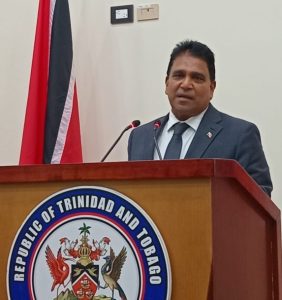
AS Trinidad and Tobago continues to deal with the Covid-19 pandemic, people have had to familiarise themselves with terms such as “social distancing,” “self-isolation” and “quarantine.”
But these precautions are not new to the country. History provides some not-too-distant examples of these and other measures adopted to deal with issues of public health and safety.
Leprosy brings to mind images of lonely beggars and Biblical reference to Lepper colonies.
However, to many, it has all but disappeared into the history books. The disease has been around since 2000 BC. We all know about lepers in the Bible. They had to live outside the regular community, call out “Unclean!” to passers-by, wear torn clothes and cover the lower part of their faces (Lv 14:35).

Contact with a leper made one unclean and unable to attend any religious service.
After all our advances, we still have to learn a lot about the disease. The mode of transmission is still a mystery. But let’s look at what we do know.
Mycobacteria is the category of bacteria that is the culprit, having two major species, one that causes tuberculosis called mycobacterium tuberculosis, and the other mycobacterium leprae that causes leprosy. These bacteria are quite unusual is that they grow at a very slow rate in living cells, thus cannot be cultured in a lab to be studied.
In the case of m leprae, it invades the nerves and the immune systems response that results in symptoms such as skin lesions, nerve damage, loss of feelings in limbs and digit loss.
The bacteria however, replicates at a snail’s pace of once every two weeks. Thus, many years may pass with no symptoms.
This causes challenges in treatment as many antibiotics target bacteria that actively replicate making m leprae is naturally resistant to several classes of antibiotics. Thus, treatment involves a cocktail of antibiotics for up to two years so target the bacteria when replicating and also prevent resistance.
Like many other parts of the world, Trinidad had to contend with the scourge of leprosy. To survive, lepers from Laventille were forced to come to the town of Port-of-Spain to beg, putting the health of the general population at risk.
A new wave of this pandemic hit Trinidad’s shores with the arrival of Indian indentured servants, making the demand for new ways to treat the disease more urgent. However, a cure for leprosy would not be developed until the latter half of the following century.
The leprosarium was unable to deal with the large number of patients. Compounding the situation was the fact that over 300 patients absconded, further endangering the population.
In 1921, the colonial government advertised that it was establishing a leper colony on the island of Chacachacare. This was met with stiff objection by a vociferous elite, who did not wish to see their loved ones living in further isolation.
Concomitantly, others were outraged over the forced evacuation of Chacachacare dwellers so that the leper colony could be set up. The residents had to abandon ancestral lands and holiday homes.
Owing to the contentious nature of the proposed move to Chacachacare, the first transfer in 1921 was done in secret. There was much wailing and gnashing of teeth.

By 1926, all sufferers of leprosy had been transferred to Chacachacare. By the 1930s, trials in medicine brought about measures to treat the disease. However, only a small percentage of those with leprosy were successfully treated and returned to mainland Trinidad. Despite the medical advances, many more died of the illness over the years.
Leprosy is really not that contagious to other diseases. Like tuberculosis, part of the stigma is that this disease is contagious.
You need to be around someone with leprosy for a really long time to catch the disease. In addition, 95% of people are naturally immune to leprosy.
Although the symptoms are undesirable, leprosy does not directly cause death. In some patients the symptoms take decades to manifest.
Fortunately, with further advances and a new programme of treatment developed by American specialist Dr Richard Keeler in 1971, patients were able to get treatment on the mainland of T&T. They were gradually removed from the Chacachacare leprosarium and cared for in special facilities on the mainland.
By 1984, the last patient left had Chacachacare permanently, closing its chapter as a quarantine island. It now is a national treasure serving as a recreation and vacation destination.

World Leprosy Day is observed on the last Sunday in January.
The day was chosen by French humanitarian Raoul Follereau in 1953 to coincide with the anniversary of Mahatma Gandhi’s death on January 30, 1948.
World Leprosy Day raises awareness of a disease that many people believe to be extinct.
Today it is not just the disease that is forgotten, but the people too.
Everyday nearly 600 more people are diagnosed with and start treatment for leprosy.
In 2014, 213 899 people were diagnosed and it is estimated that millions more go undiagnosed.
By Visham Bhimull is a medical doctor and history buff
Some segments of this article are taken from the National Trusts’ Blog “From mainland to island: the leprosy problem in Trinidad” written by Leslie-Ann Paul, heritage preservation and research officer, National Trust of TT, based on the research and writings of Anthony de Verteuil CSSp and Ashleigh J Morris of the National Trust.
![]()












